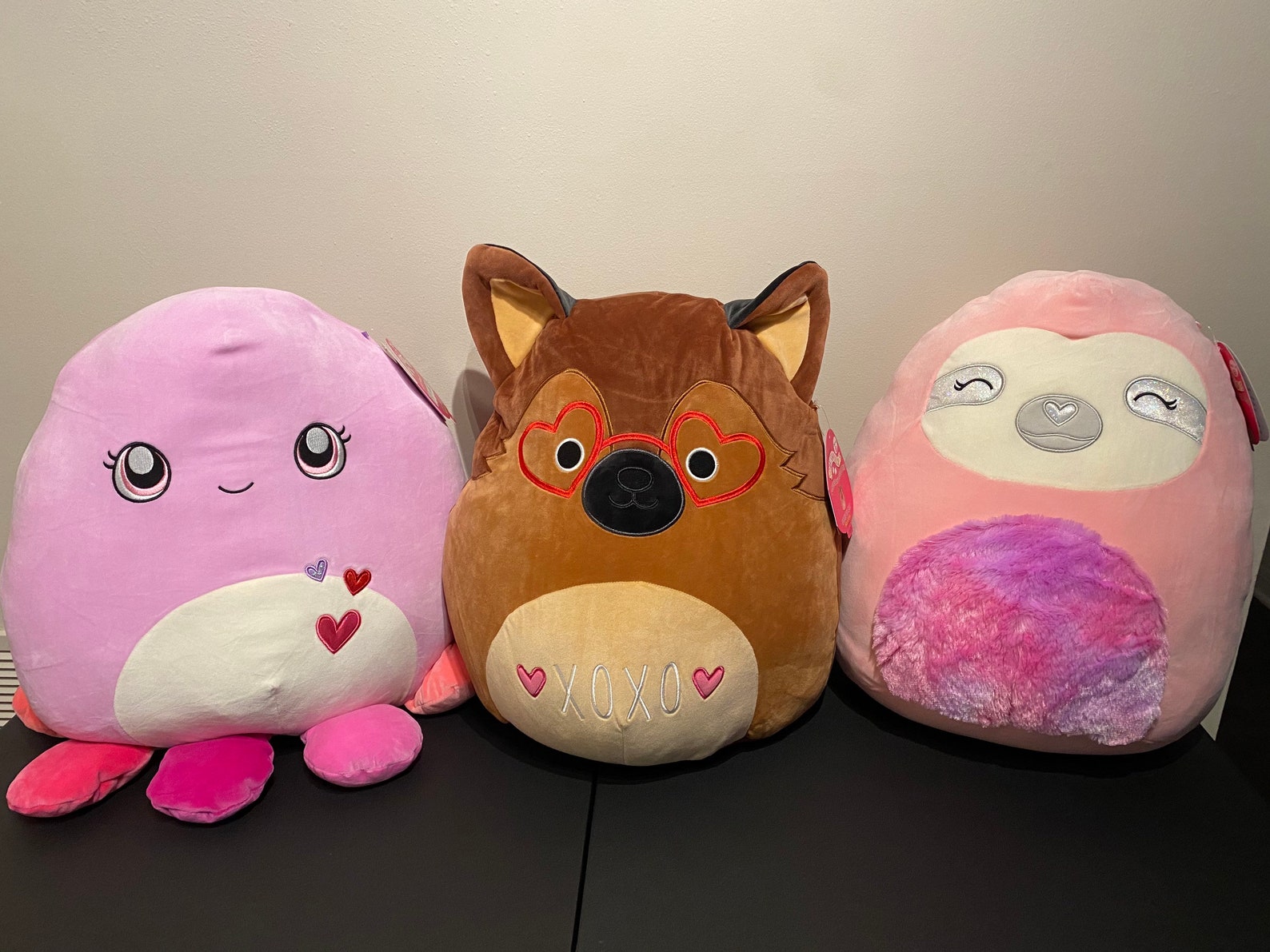

“The feedback was incredibly positive and they quickly became widely sought after,” Kelly says. The first, “ Bobby the Bunny,” is a tie-dye bunny with they/them pronouns that rolled out last year. The Squishmallows line-up has a number of characters that are non-binary. My friend's daughter has given and received Squishmallows as gifts. Both my sister and a friend’s 10-year-old daughter say they love the squishy and huggable nature of Squishmallows, and how the animals can be used as pillows.

The exterior fabric goes beyond being tactilely pleasing to being comforting and almost compelling-the animal was so soft I just didn’t want to put it down. Namely how soft and cuddly they are-I didn’t grasp the rage until I physically picked one up prior to purchasing it at Costco. Something about their soft fabric and squishy filling just screams "cuddle me."Īside from collectibility, Squishmallows have a couple other traits that may compel consumers. My sister immediately wrapped the Squishmallow I gave her in a hug. “Squishmallows are easy to collect because they are not expensive, they are widely available, and they have a variety of appearances.” Indeed, the company offers more than 1,000 characters, so the sky’s the limit to the number of Squishmallows someone could collect. “Collecting, as a consumer behavior, can be seen as a form of escapism because it lets a person focus and be immersed in a quest to grow the collection,” she says. “Gen Z is likely to be a strong market for goods that cater to escapism,” Stacy Wood, a professor in marketing and the executive director of the Consumer Innovation Collaborative at North Carolina State University wrote in a publication for the school’s Institute for Emerging Issues. Squishmallows are collectibleĪside from social media, Squishmallows’ characteristics appeal to Gen Z’s consumer buying patterns. (My 18-year-old sister, for one, thinks that might have been the first time she heard about the soft toys.) Kate Hudson and Lady Gaga have also made posts about Squishmallows. Charlie D’Amelio, a 17-year-old dancer who’s amassed an impressive 100 million followers on TikTok-the largest following of anyone on the app-posted about her Squishmallow collection in February on Instagram, where the post garnered nearly 5 million likes from her 42 million followers there. Social media platforms, including TikTok and Instagram, no doubt played a huge role in making Squishmallows surge in popularity.

It’s hard to pinpoint exactly what launched these plushies into the spotlight, but a combination of social-media attention, collectibility, and envelope pushing are likely key factors in their sudden success. Most Squishmallows aren’t that expensive, though, and come in somewhere between $22 and $50. They range in price from as little as $5 (for the smaller ones, of course), to a jaw-dropping $119 for a 24-inch Maui Pineapple from Walmart. Squishmallows come in seven sizes, starting at a mere 3.5 inches tall, and going up to 24 inches. Some are bakers, others are sports narrators, and others, like the cat that I bought, sound like borderline millennials, despite their Gen Z appeal: “Tres’zure loves to plan events for her friends… favorite part is creating the vision board and making memories.,” the tag reads. “The brand expecting to reach its 100 million milestone in the next couple of months.”Įach Squishmallow's tag features a brief personality description and name for the character. To date, “more than 85 million Squishmallows have been sold,” he says. When they quickly disappeared off store shelves, Kelly saw their potential.

Initially Kellytoy released just eight characters that were sold at Walgreens. The first Squishmallows date back to 2017, says Jonathan Kelly, Co-President of Kellytoy, the company behind the craze.


 0 kommentar(er)
0 kommentar(er)
